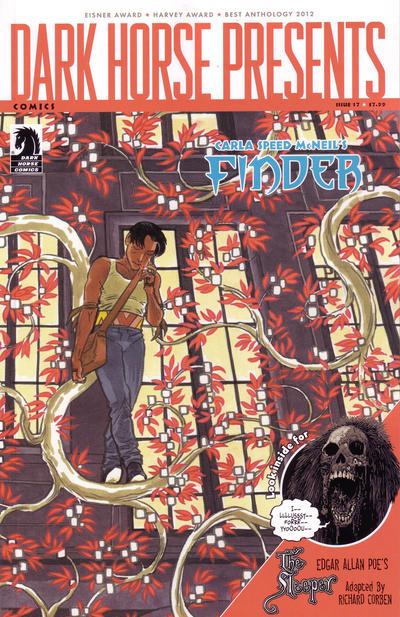I was a bit too young to enjoy thoroughly the horror comic magazines of the early 70's. When Marvel pushed into the zone with Monsters Unleashed and Dracula Lives, I began to notice them. I'd bought a random issue of Eerie, but I never got them as a regular thing. So Web of Horror was totally off my charts in 1969 when it debuted. I've long been fascinated by the short-lived magazine, mostly because of the outstanding talent associated with. I like everyone else am a Berni Wrightson fan and guys of like Mike Kaluta and Frank Brunner always get my attention. I was less plugged into Jeff Jones, but, I liked all the work by him I encountered. He came into focus when The Studio was set up with Jones joining Kaluta, Wrightson and Barry Windsor-Smith in attempts to market portfolios and such.

When Fantagraphics announced they were going to at long last publish a reprint of the series I was immensely pleased and pre-ordered a copy as soon as I was able to do so. Now I have it my clutches to help celebrate Halloween.
Terry Bisson, Clark Dimond, and Dana Marie Andra all write essays explaining how Web of Horror came to be. His boss Robert Sproul, the guy behind Cracked magazine, was the guy with the deep pockets and so he was the guy Bisson and Dimond approached about a magazine in the Warren magazine vein. Bisson already worked for Sproul. Bission had connections to the young artists filling the pages of fanzines at the time. So, he corralled Wrightson, Kaluta, Reese, along with Frank Brunner, Wayne Howard, the painfully underrated Bruce Jones, and veterans such as Syd Shore and Otto Binder to fashion just such a magazine.

With writers such as Nicola Cuti tapped to join in, these young turks set about making some tasty monster mags. I'm particularly impressed by Ralph Reese, who brings a hard edge to his fantasy yarns. Wrightson of course is tapping into that classic Ghastly and EC vein he is famous for and Kaluta offered up some dreamy fantasy images. Jeff Jones was brought in for some awesome covers. (He did issues one and two and Wrightson did issues three and the unfortunate four.) Wayne Howard is a fave and his story kicks off the first issue, but alas it's his only contribution. (His second was never published.) The Brothers Ussher by Dimond and artist Donald Norman is set up to be a continuing saga, but it has only one installment.

The title only lasted three issues. And that's largely because some of its critical benefactors abandoned it. Brisson admits to a severe lack of professionalism when he just dropped out and headed west to find a commune. The artists tried to pick up the pieces, but those pieces were scattered here and yon. Frank Brunner rescued some already submitted artwork scheduled for the fourth issue which never came to be, mostly because Sproul himself ducked out to Florida. Many of those abandoned but finished stories showed up in other black and white magazine, one I remember reading in a Marvel magazine.

This handsome volume has all the published issues, the unpublished fourth issue and even a story eventually published in For Monsters Only. To be able to behold and enjoy all these lush stories by the likes of Wrightson and Kaluta and others is a grand treat, especially knowing that all too many of these creators have passed on. I do have one small bicker and that's that the bio for Nicola Cuti made no mention of his co-creation E-Man, my favorite superhero, but that's a small oversight. This volume is well and truly time capsule full of treasure from an era when I was a young man and sopping up comics at fantastic rate. This takes me back to when comics were fun and just a little scary as well.
Rip Off




















































